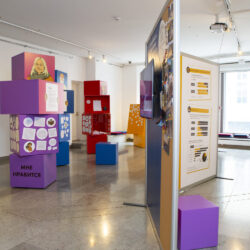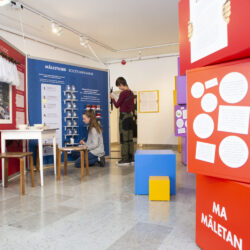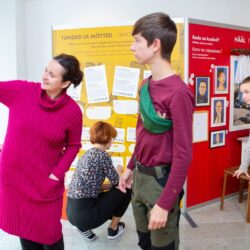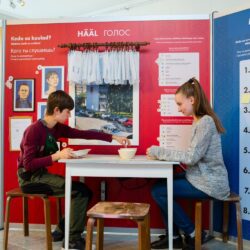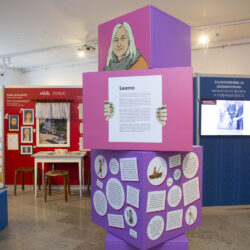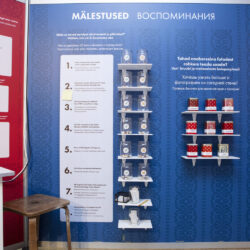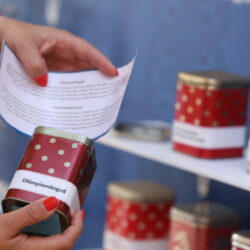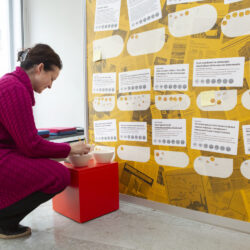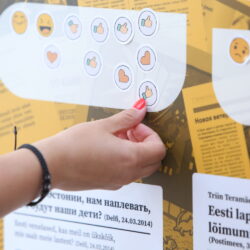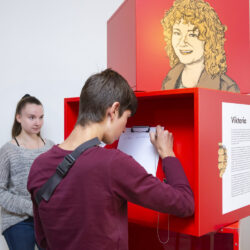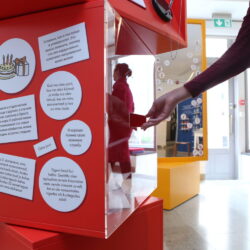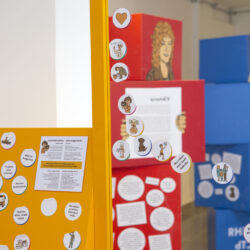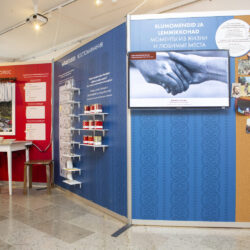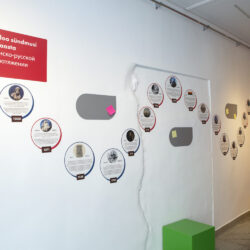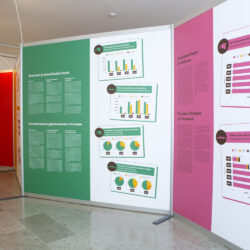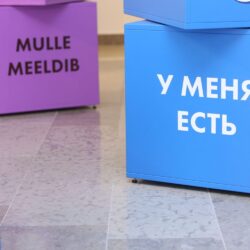“Museum Laboratory”: a new experimental exhibition of the Tallinn Russian Museum
The Museum Laboratory is an experimental exhibition. We left the traditional approach to creating exhibitions and took simple stories of people and everyday life as a basis.
The laboratory tells the stories of Estonian Russians, allows you to think about identity and its diversity, about a sense of home and belonging, about your role and position in society and the change of its importance over time. The exhibition halls are filling up gradually. We’ll start by focusing on personal stories, focusing on the anthropological micro-level. Later, a historical context will be added to it, and then we will move on to the level of feelings and emotions, complementing the exhibition with a work of art.
The museum takes on the role of an intercultural mediator that values collaborative creativity, empathy and understanding. The goal of the Museum Laboratory is to identify, together with our visitors, topics that need to be discussed publicly. They will form the basis of the future exhibition, reflecting the history of Estonian Russians. That is why the main role in the experimental exhibition is assigned to visitors, without whom it is impossible to supplement the laboratory with information for a full-fledged display of the history of Estonian Russians.
Watch, talk, discuss, share! Don’t criticize, but respond with your personal story. This is an opportunity to leave your mark on the exhibition space of the museum.
Installations created by the curators of the exhibition are made to inspire and awake memories:
IDENTITY
Jaanika Jaanits, Center for Applied Anthropology
What will you answer if you are asked who you are? What determines who and how we present ourselves and describe ourselves to other people? What makes up our identity? The purpose of the installation is to show the diversity of identities and to encourage people to reflect on their own different identities, roles and connections. Identity means identifying oneself with a specific group based on various attributes and creates a shared sense of belonging. At the same time, we also know how we differ from those who are not included in this group. Throughout life we belong to different groups and therefore have several identities and different roles. And how do these different identities affect relationships, attitude towards something, thinking, understanding? I urge you to take a deeper look at yourself and others, taking into account not only national origin, position or gender, and find this common part and similarity that is inherent in all of us as people. When reflecting on your identities, the personal experiences of the Russian-speaking Estonian residents and their stories can provide help and inspiration.
STATISTICS AND HISTORY
historian Olev Liivik in collaboration with Hiljar Tammela
It is sometimes said that there are little lies, big lies and statistics. There is some truth to this statement, since data can be collected, presented and interpreted in different ways and for different purposes, but can’t you say the same about something else? As a historian, I believe in statistics and count censuses as valuable historical sources. I believe that in order to comprehend and understand the various connections in Estonian society, it is necessary to look more often at statistics. An excellent opportunity for this is provided by population censuses conducted since the end of the 19th century, but also by other statistical time series. It is on this basis that at this exhibition I tried to depict and comprehend Russian history, the processes associated with the population, education and knowledge of the languages of Estonia from the end of tsarist time to the present day. However, the history of modern statistics is not so long, and therefore, to analyze any processes in the history of Estonia, one needs to go further into the depths of the centuries. For this, it is necessary to refer to a variety of sources, be it chronicles, travel notes or royal decrees, which are fully connected with the history of Russians in Estonia.
EVERYDAY LIFE IN THE KITCHEN OF THE PANEL HOUSE
sociologist Alina Jašina-Schäfer
What role does a small space like a kitchen in a panel house play in our life? The kitchen was once a social space for the privacy, and in Soviet times, politics, personal relationships, and gossip were vigorously discussed here. So is the kitchen really necessary today only for cooking and eating?
Our kitchen here and now is an open space for communication, our personal stories, emotions and experiences of life in Estonia. Whether we listen to the radio or watch TV in the kitchen while cooking, flip through the news over a cup of tea, or just talk about nonsense: how often, thanks to everyday habits, conflicting shadows and voices of the past and the present penetrate our routine? These shadows are always invisibly present in our life and form our relationships with other people, our aspirations and dreams, being an integral part of the question “Who am I?”.
But what one will find in the kitchen in the end is up to you.
ART PROJECT (Hall II, November 2021)
artist Tanya Muravskaya
The connecting thread for Estonian Russians is undoubtedly life in the political and legal space of Estonia. Among the similarities of Estonian Russians, the main language is the common Russian language. Language carries and reflects the political system, changes in generations and families, transforming itself as a living and growing organism – for example, a tree. But in places the growing and changing tree becomes solid, petrified, which allows you to separate and analyze it in essence. The Russian language, like the multiple identities of the ethnic groups living in Estonia, is very diverse. The concept of the art exhibition is to collect and determine the plurality of Russian words – permanent, valuable, associated with childhood memories and expressive vocabulary characteristic of one person. The goal is to create a mosaic-like panel, an atlas of many words, indicating the identity of Estonian Russians and the multifaceted history of Estonia today.
The exhibition will change. Visit us again! Follow the Laboratory on the internet. Share your stories and photos, participate in sweepstakes and events, and share your impressions of what you saw orally or in writing. Everyone’s opinion is important to us!
The program of events is prepared jointly with volunteers who were trained in cultural and art mediation courses within the framework of the international Creative Europe project “Agents of Change: Mediating Minorities” (MeM).
Photos by Annika Haas
Museum team: Jelena Tšekulajeva, Julia Kornejeva, Irina Krivorukova, Johanna Rannula
Curators: Jaanika Jaanits (Rakendusliku antropoloogia Keskus), Olev Liivik ja Hiljar Tammela, Alina Jašina-Schäfer, artist Tanja Muravskaja
Translation into Russian: Jelena Rõbakova
Exhibition design: DADA
Thank you for your help: Auli Tohv, Lauri Frei, Jelena Kazinjan, Irina Gavriltšik, Lennart Kumm, Leo Savila, Andres Lall
The experimental exhibition is open until September, 2022 in the hall on the street side of Pikk 29 a of the Tallinn Russian Museum.
